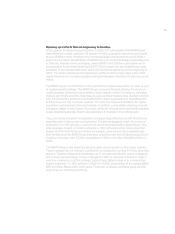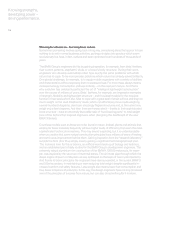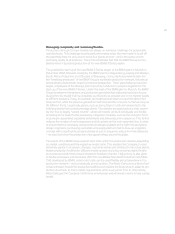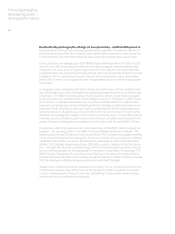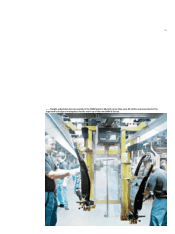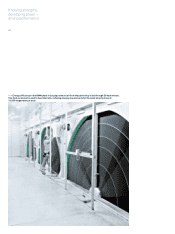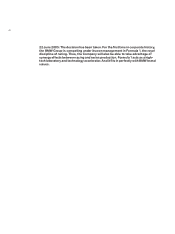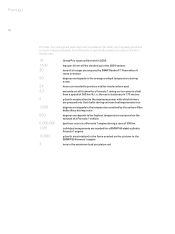BMW 2005 Annual Report Download - page 170
Download and view the complete annual report
Please find page 170 of the 2005 BMW annual report below. You can navigate through the pages in the report by either clicking on the pages listed below, or by using the keyword search tool below to find specific information within the annual report.22
Knowing strengths,
developing power –
driving performance.
Understanding demographic change as an opportunity – and benefiting from it.
Industrial nations are currently undergoing an immense upheaval. For years the number of
births has been lower than that of deaths, while statistical life expectancy continues to rise.
In most industrial countries the classic population pyramid has long turned upside down.
Clearly, therefore, the average age of the BMW Group’s workforce will be far older in 2020
than it is now. With fewer years of study and the statutory age of retirement likely to rise,
employees will work up to ten years longer than they do today. It is also clear that older
employees tend to be more prone to illness and are often not as physically fit as their younger
colleagues. At the same time, however, they are more experienced, more responsible,
better able to make sound judgments and indispensable because of their organisational
knowledge.
In an aging society, companies that both enhance the performance of their workforce and
resolutely make use of their employees’ knowledge and experience are more likely to gain
a head start. The BMW Group is putting this into practice with an overall project approach,
which anticipates the developments of demographic change. In this project, called “Today
for tomorrow”, employees are offered not only advice and information to heighten their
awareness of old-age provisions and health protection, but also privately financed pension
schemes. Health and fitness training as well as comprehensive health care programmes
help employees of all ages to use their potential to the full and to remain fit and healthy.
Workplaces are designed to adapt to the human body and the way it moves rather than the
other way round. In the Munich plant alone, more than euro 25 million were invested in the
design of ergonomically optimised workplaces for the start-up of the new BMW 3 Series.
If necessary, older employees are also hired selectively. At the BMW plant in Leipzig, for
example – the youngest plant in the BMW Group’s worldwide production network – the
oldest newcomer was 59 years old when he was hired. The Company encourages a healthy
mix of young and experienced employees, of men and women who can use their individual
capabilities both to their own and to the Company’s advantage. In order to promote these
abilities, the Company invests around euro 200 million a year in training and further
educa-
tion – a budget for education corresponding to that of a medium-sized university. And
just
as at a university, people are to be prepared for new tasks in new fields of knowledge. The
BMW Group’s “Qualitative Human Resources Planning” forecasts which skills will be in
greatest demand and where which employees will be required in future. It thereby ensures
that the employees’ abilities are developed and promoted with foresight.
Today, these measures benefit employees and Company; in the competitive environment
of tomorrow, however, they will be decisive for success. For then it would be far too late
to react to demographic change. In contrast, anticipating it today simply means turning
what seems to be a weakness into strength.





